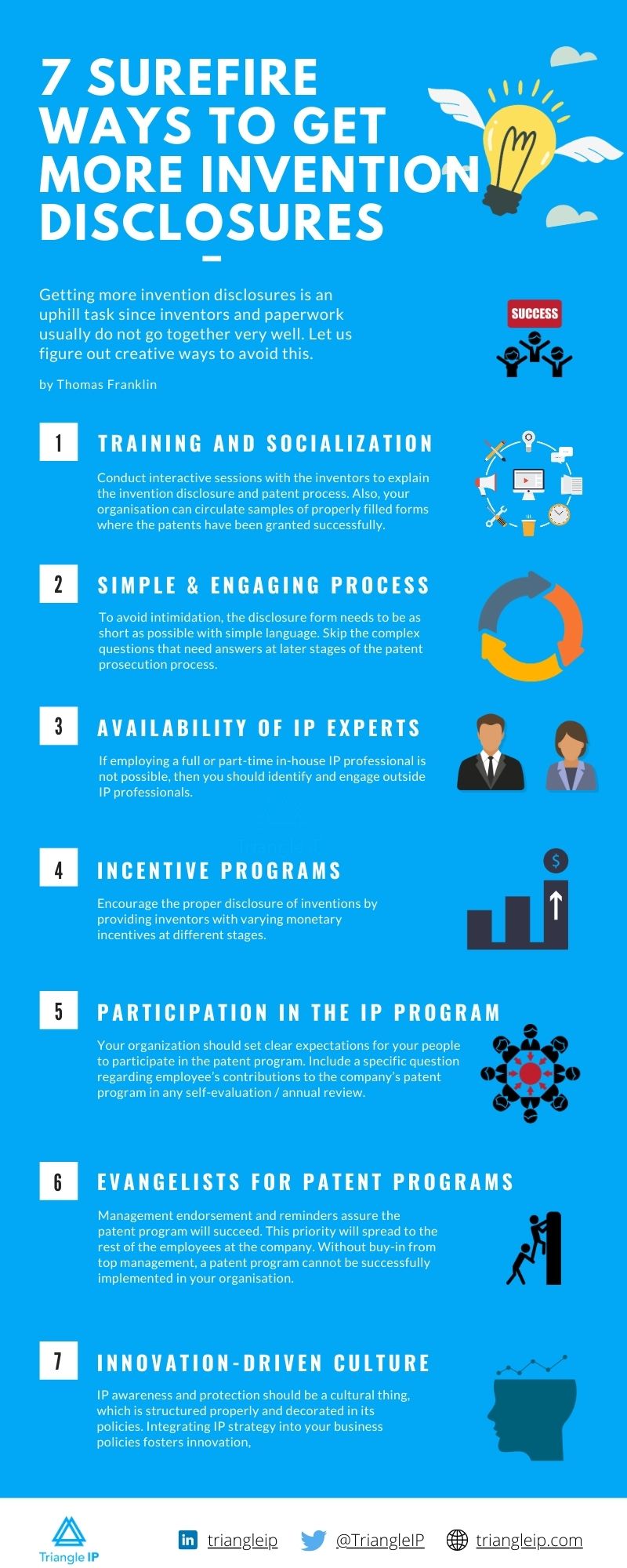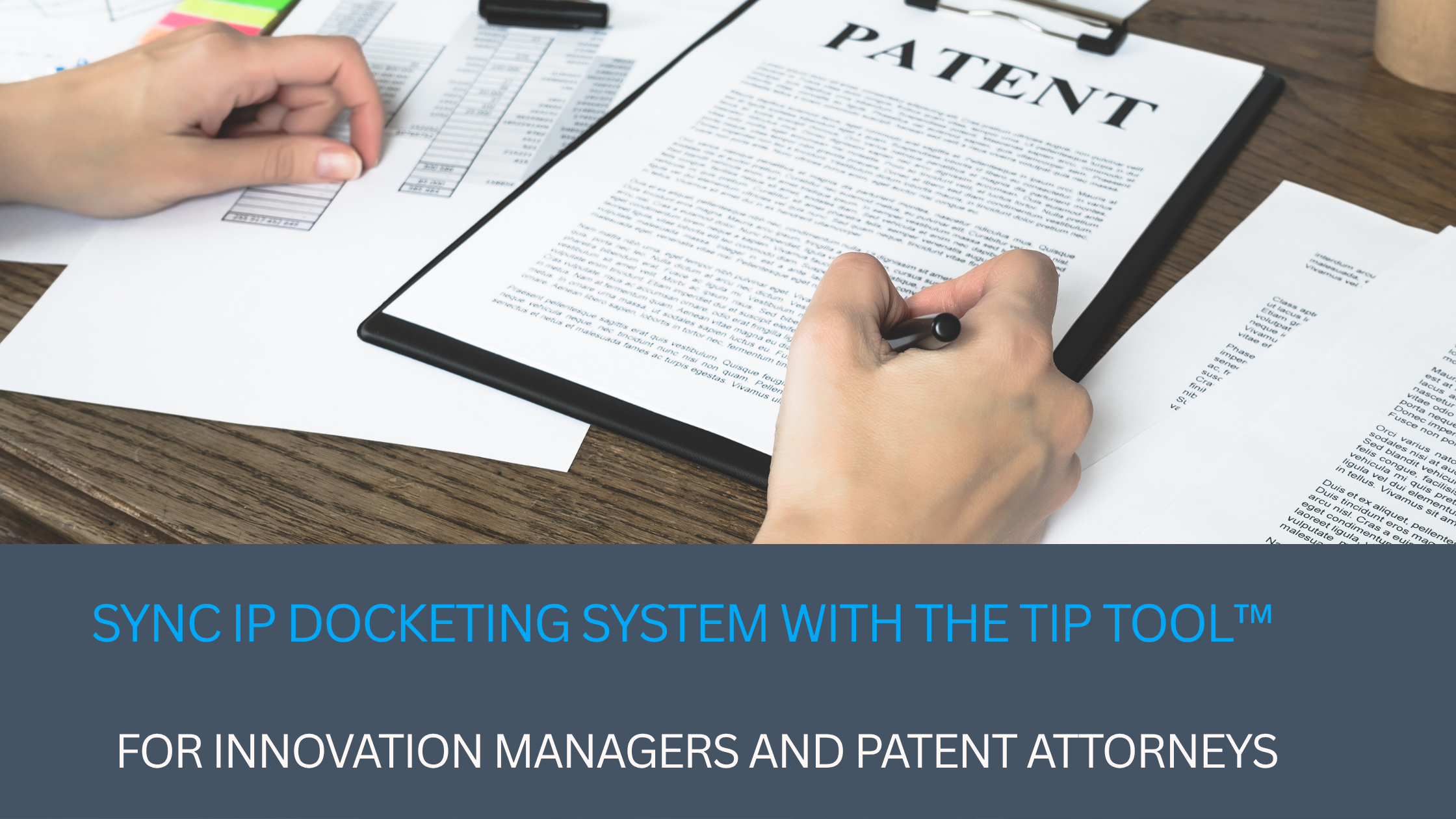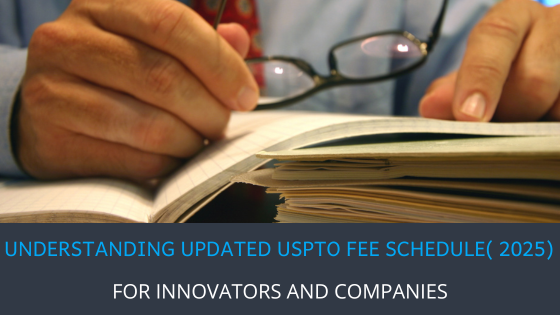“Getting more invention disclosures is an uphill task since inventors and paperwork usually do not go together very well.”
If your organization is not able to get enough invention disclosures from your inventors, you are not alone. To overcome this challenge, it’s essential to employ smart patent filing strategies that streamline the process for inventors. People are not eager to engage with things they do not understand. Long, complex forms are just that kind of thing. Inventors are busy people. Their main job is innovation and development, not paperwork.
Inventors often completely forget to report their inventions for patenting because of their busy schedules. Sometimes, they think that the invention is too obvious and they don’t report it at all. As a result, the innovation managers may lose potentially patentable ideas.
The first step is to get inventors to capture more innovation using an invention disclosure form. Furthermore, when inventors fail to submit invention disclosures in a timely manner, it leads to the patenting process being rushed. All too often enterprises approach me just before the launch date, seeking help for patent protection at the eleventh hour. However, as discussed below, there are ways to solve this problem.
More Invention Disclosures
Here are 7 ways you can get inventors to submit more invention disclosures:
- Training inventors on the importance of IP to socialize the process
- Keeping the invention capture process simple and understandable
- Ensuring the availability of IP experts in-house or from outside on a contractual basis
- Formulating a patent incentive program that encourages inventor involvement throughout the entire process
- Making participation in the IP program part of the inventor’s job description
- Evangelizing of the patent program from the executive level down
- Making the creation of IP a core part of the organisation’s culture
#1 – Training and Socialization
Training and educating about the importance of idea capture and the ways to fill the invention disclosure form (IDF) efficiently is essential. Alongside these measures, having a skilled patent attorney on board can simplify the patenting process, making it more accessible for inventors. An IDF helps your organisation begin the process to decide which inventions are patentable and worth pursuit. The information in the IDF also documents information that will help evaluation and drafting of a patent application.
Conduct interactive sessions with the inventors to explain the invention disclosure and patent process. Also, your organisation can circulate samples of properly filled forms where the patents have been granted successfully. Consider publishing guidelines for filling out the form or recording training for all new hires to understand the innovation program.
#2 – Simple & Engaging Process
As stated above, people do not engage with intimidating things they do not understand. To enhance engagement, incorporating latest innovations in the IP domain into the IDF process can be highly effective. The process for filling out an IDF needs to be simple and avoid unnecessary complexity. It has to allow the inventors to gather their thoughts about the invention and express them easily.
One of the ways to increase engagement with the disclosure process is by having online disclosure forms. Electronic forms can be reactive and adaptive depending on the answers. It also can provide helpful tips and allow collaboration with all parties involved.
Whether the IDF is online or not, it should aim to document only the necessary information to initiate the process. Invention disclosure mainly requires the inventor to accurately describe the technologic problem and solution along with advantages of their invention over prior solutions. To avoid intimidation, the disclosure form needs to be as short as possible with simple language. The key elements of an intuitive and inventor friendly IDF are:
- Title of the invention
- Inventor’s contact information
- Summary of the idea / invention including:
- The problem that prompted the creation of the invention
- The solution provided by the invention
- The novel and/or enhanced features in comparison to previous similar inventions
- Detailed diagrams, flow charts, drawings etc. explaining the working of the invention are great too
- Attaching any pre-existing documentation will help
Ask your inventors to answer these basic questions in order to make the drafting of comprehensive patent specifications easier. Proper invention disclosure will ensure a hassle free patent prosecution process.
At Triangle IP we have created a simple Invention Disclosure Form, which we also call an Idea Capture Form. It skips the complex questions that need answers at later stages of the patent prosecution process. There is also the option of adding tags, which can be helpful later to filter ideas.
#3 – Availability of IP Experts
Your organisation can also explore the possibility of employing in-house Intellectual Property (IP) professionals who can help the inventors with the process. If employing a full or part-time in-house IP professional is not possible, then you should identify and engage outside IP professionals. There are consultants, patent agents and patent attorneys who are well versed in the innovation capture process. Conducting seminars with the help of IP experts once or twice a year can be beneficial too.
#4 – Incentive Programs
When there is a lack of incentives to participate in the patenting process, inventors do not feel the need to pay as much attention to filling out IDFs. Encourage the proper disclosure of inventions by providing inventors with varying monetary incentives at different stages. These programs vary in their incentive while paying for engagement through the patent process. For example, award incentives at the following stages of the process:
- Upon submitting the IDF
- When the invention is selected for patenting
- At the time of filing the patent application
- Upon grant of the patent(s)
- After the inflow of revenue from the invention
#5 – Participation in the IP Program.
At the time of hiring engineers, software developers, scientists, and other innovators, your organisation should set clear expectations for them to participate in the patent program. Include a specific question regarding employee’s contributions to the company’s patent program in any self-evaluation / annual review. This encourages participating and eventually submitting more disclosures.
#6 – Evangelists for Patent Programs
The top management of your organization should remind employees of the importance of the patent program. They should encourage inventors to submit an IDF as soon as an idea is conceived. Management endorsement and reminders assure the patent program will succeed. This priority will spread to the rest of the employees at the company. Without buy-in from top management, a patent program cannot be successfully implemented in your organisation.
On a side note: Would you want to know how your patent application is progressing at the USPTO compared to other applications in the same domain?
The TIP tool offers statistics of the law firm and the examiner handling your case. Once the application is filed at the USPTO, and an examiner is allotted to your case, the tool indicates the relative performance of the law firm handling your case. The statistics revolve around the number of arguments, grant rate, and grant time. The tool also indicates the case health, for instance, it can tell you if a case needs your attention. There is a whole bunch of insights that you can gather from the TIP tool for strategic patent prosecution.
Request insights for any of your cases at the patent office using the form below.
#7 – Innovation-Driven Culture
Your organisation should make the process of invention disclosure and patent prosecution worth the inventor’s while. Implementing an employee innovation program can significantly boost inventor engagement and participation in the patent process. Your patent program should not be a burden on the inventor. IP awareness and protection should be a cultural thing, which is structured properly and decorated in its policies. Integrating IP strategy into your business policies fosters innovation, for example, the employee handbook. An effective patent program will properly protect your innovation.
Conclusion
A simple and engaging invention disclosure process with the right training and motivation for inventors will help your organisation to:
- Capture more invention disclosures
- Decrease innovation that never gets documented
- Expedite the process of filing patent applications
- Documents innovation with knowledge capture
- Provide your company with all the benefits of patent protection
Create a culture in your organisation where inventors understand the importance of patents and are enthusiastic about the process. To get more invention disclosures, train inventors to accurately fill out the IDF while socializing the program. A proper capture process helps identify all the ideas which can be transformed into patentable inventions.
The IDF needs to be simple and engaging. At Triangle IP (TIP) we have created an intuitive drag-and-drop innovation capture tool to take control of the patent mining process while encouraging collaboration. Using the TIP innovation management tool will maximize innovation capture at your organization.




